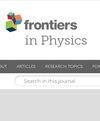tau 病理学临床前小鼠模型中 [18F]THK-5317 摄取的多器官比较和量化参数
IF 1.9
3区 物理与天体物理
Q2 PHYSICS, MULTIDISCIPLINARY
引用次数: 0
摘要
简介:目前的小动物 PET 仪器可提供足够的分辨率、灵敏度和全身放射性示踪剂分布的定量准确信息。然而,大多数临床前成像研究都集中在感兴趣的疾病相关器官上,而没有利用小动物 PET 提供的全身信息。在本研究中,我们研究了[18F]THK-5317(也称为(S)-[18F]THK-5117)在两种tau过表达转基因小鼠模型和不同年龄、不同性别的同窝对照中的分布情况。我们比较了小鼠多个器官对放射性示踪剂摄取的多个定量参数,以研究与性别、年龄或品系相关的差异:方法:静脉给药后,进行 60 分钟动态 PET 扫描,然后进行静脉采血、器官摘取和放射性薄层色谱法代谢物分析:结果:在所有品系中,雌雄动物的[18F]THK-5317血液药代动力学和代谢均存在显著差异。通过双向方差分析确定了器官 VT 的性别差异。在所有调查器官中,器官-血液浓度比与器官VTs都有很好的相关性:结论:按照我们的工作流程,可以很容易地对小鼠的[18F]THK-5317摄取进行直接的多器官分析。从得出的定量参数来看,器官对血液的值与计算出的 VTs 的相关性最好。鉴于 3R 原则已被积极纳入临床前定量成像,我们建议在应用更复杂的动力学模型(包括全动脉血采样等侵入性方法)进行放射性示踪剂定量之前,该工作流程可能适用于选择新型放射性示踪剂候选者。本文章由计算机程序翻译,如有差异,请以英文原文为准。
Multi-organ comparison and quantification parameters of [18F]THK-5317 uptake in preclinical mouse models of tau pathology
Introduction: Current small-animal PET instrumentation provides sufficient resolution, sensitivity, and quantitative accurate information on the radiotracer distribution within the whole body. However, most preclinical imaging studies focus on the disease-related organ of interest and do not use the total body information provided by small-animal PET. In this study, we investigated the distribution of [18 F]THK-5317 (also referred to as (S )-[18 F]THK-5117), a radiotracer initially developed to visualize tau deposits in the brain, in two transgenic mouse models of tau overexpression and littermate controls at different ages and of both sexes. We compared multiple quantitative parameters of radiotracer uptake in multiple organs of mice to investigate sex, age, or strain-related differences.Methods: After intravenous administration, 60-min dynamic PET scans were acquired, followed by venous blood sampling, organ harvesting, and metabolite analysis by radio-thin-layer chromatography.Results: Blood pharmacokinetics and metabolism of [18 F]THK-5317 significantly differed between males and females across all strains. Sex-related differences in organ V T V T 18 F]THK-5317 uptake in mice was easily achievable. From the derived quantitative parameters, the organ-to-blood values correlate best with the calculated V T
求助全文
通过发布文献求助,成功后即可免费获取论文全文。
去求助
来源期刊

Frontiers in Physics
Mathematics-Mathematical Physics
CiteScore
4.50
自引率
6.50%
发文量
1215
审稿时长
12 weeks
期刊介绍:
Frontiers in Physics publishes rigorously peer-reviewed research across the entire field, from experimental, to computational and theoretical physics. This multidisciplinary open-access journal is at the forefront of disseminating and communicating scientific knowledge and impactful discoveries to researchers, academics, engineers and the public worldwide.
 求助内容:
求助内容: 应助结果提醒方式:
应助结果提醒方式:


